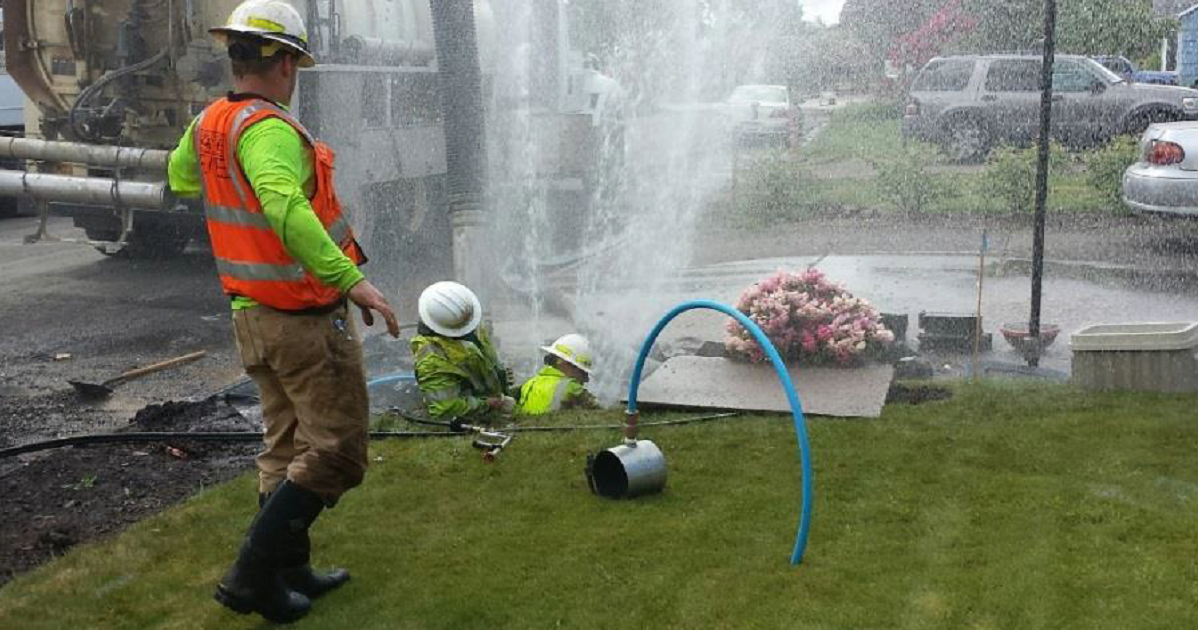Related News
Related News
-
Let's Talk Turkey. Is your family ready for winter?
We're heading into the holidays, but that also means snow, ice, and not-so-nice weather might be in the forecast. Here are some tips to prepare in advance.
Find Out More -
EWEB Hosts Annual Spill Drill to Protect McKenzie River
EWEB led emergency responders in its annual “spill drill” on the McKenzie River on Wednesday, Oct. 15, at the Trail Bridge Campground.
Find Out More -
A day in the life: Monitoring water quality throughout the McKenzie Watershed
Follow Senior Environmental Specialist David Donahue as he collects water quality samples from throughout the watershed as part of EWEB's early warning system for threats to Eugene's drinking water.
Find Out More -
EWEB Partners with Eugene School District 4J to Celebrate New Kennedy Middle School Emergency Water Station Site
Hundreds of attendees practiced filling up water containers at Saturday's demonstration event.
Find Out More -
Electric Projects underway in North & South Eugene
Underground lines and disaster-resilient power poles are part of EWEB’s infrastructure upgrade near Eugene’s largest natural resource area.
Find Out More -
Quartz Creek: Setting the Stage for Floodplain Restoration
The project resets the floodplain along 1.8 miles of a formerly channelized creek to improve water quality, fish habitat and natural disaster resiliency.
Find Out More -
Pure Water Partners: 5 Years of Regeneration
As EWEB and the Pure Water Partners observe the fifth anniversary of the Holiday Farm Fire, we celebrate major milestones in the watershed's recovery and check back in with PWP landowners who still have a lot of work ahead as they continue to rebuild their lives.
Find Out More -
Join the Pledge to Prepare
When you think about getting ready for an emergency, you probably have questions. You aren't alone. Preparing for emergencies can be overwhelming, which is why EWEB has put together a 12-month program to help you and your family get two weeks ready.
Find Out More -
You can’t predict the next disaster, but you can prepare
The earthquake lasted less than a minute. But now the power’s out. The tap runs dry. Cell service is spotty. Would you be ready?
Find Out More -
EWEB Celebrates Operators on the 75th Anniversary of the Hayden Bridge Filtration Plant
Learn more about the Water Treatment Plant Operators who have kept the Hayden Bridge Filtration Plant running for the last 75 years.
Find Out More -
NASA partners with EWEB to assess wildfire impacts to drinking water
NASA's Earth Information Center shares a new video detailing how EWEB's Drinking Water Source Protection work is advising new research tools
Find Out More -
EWEB prepares for wildfire season with risk mitigation measures
EWEB is building a more resilient electric system to weather various types of disasters, from wildfire to winter storms.
Find Out More -
EWEB environmental specialist wins prestigious awards for publication
Article recounting EWEB’s efforts to protect the McKenzie River after Holiday Farm Fire earns national recognition
Find Out More -
Last Call for EWEB/Lane County Septic Grants
Holiday Farm Fire recovery program now eligible for businesses, residential property owners who purchased post-fire, to cover inspection costs and new construction
Find Out More -
EWEB Pilots New Line Safety Program for 4th graders.
This year, EWEB is ramping up power line safety for children, specifically 4th graders.
Find Out More - Show More
Smart Tech Saves Time and Money in Locating Leaky Water Pipes
June 12, 2017

A recent water pipeline assessment that relied on a free-swimming acoustic sensor called a SmartBall® is an example of using innovative, cost-effective methods to maintain our infrastructure.
Buried infrastructure: Our community's invisible assets
Most people know that Eugene's drinking water comes from the McKenzie River. We divert water from the McKenzie at our intake outside of Springfield, and pump it to the Hayden Bridge Filtration Plant where it is filtered and disinfected. What happens between the Hayden Bridge plant and customer taps is, for many, a mystery. Water travels through hidden, underground pipelines 24 hours a day, 365 days a year, beneath roads, sidewalks, rivers and buildings. These water pipelines are the backbone of our community's drinking water system.
Transmission mains are large-diameter pipelines that convey treated water to storage reservoirs or to the smaller-diameter pipes that distribute water to homes and businesses. EWEB maintains 36 miles of transmission mains—enough to connect Skinner Butte and Spencer Butte almost seven times.
Maintaining the transmission lines is no small job.
First of all, transmission lines are big. Your average 5-year-old could stand inside of one with headroom to spare. They also are long—sometimes several miles long, and buried deep underground—usually 30 inches or so.
Two of EWEB's primary transmission mains leave the Hayden Bridge treatment plant and convey an average of 25 million gallons of water each day, over a distance of four miles into the Eugene city limits. And in some cases, the mains are close to or directly beneath existing homes, businesses, roads and natural areas, making them hard to assess and even harder to repair or replace. The 45-inch Hayden Bridge transmission pipe, constructed in 1948, travels underneath Interstate-5. Another 30-inch main travels under the Valley River Inn. Several of our transmission pipes journey beneath the Willamette River at different locations around town.
And like most pipes, these transmission lines can leak from time to time.
Over the last few years, EWEB crews found and repaired two "pinhole" leaks on the 45-inch Hayden Bridge main. Fortunately those leaks were under a grassy surface near a bike path, and therefore relatively easy to repair. But there's always a chance that a small leak could exist underground, undetectable from the surface. Assessing the condition of the pipes, and finding and fixing small leaks before they become big problems, is important but difficult work.

In 2016 a leak was discovered on EWEB's 45-inch transmission line near the Hayden Bridge Water Filtration Plant.
"Infrastructure decisions affect the whole community for generations to come, and replacing buried infrastructure, in particular, is very costly," said EWEB civil engineer Nathan Endicott. "It's important to know the condition of existing pipes so that we can effectively plan and budget for both immediate and long-term projects." Nathan and his engineering colleagues have been researching effective ways to check transmission lines for leaks and, after a lengthy review and planning process, they landed on an innovative solution called a SmartBall.
SmartBall "listens" for leaks
A SmartBall is an acoustic sensor wrapped in a foam covering. It travels through the pipeline listening for the sounds of leaks and air pockets. Its highly sensitive acoustic sensor can locate pinhole-sized leaks, while a monitoring device marks the location of the leak. It's accurate to within a few feet of an actual leak.
"Thanks to modern technology, we have many options available for leak detection and condition assessment," said Nathan. "An EWEB review committee selected the SmartBall solution because it was proven effective for inspecting miles of pipe in a day, and could be used for a fraction of the cost of other acoustic inspection methods." Using the SmartBall, EWEB engineers were able to assess more than five miles of transmission main from Hayden Bridge to headquarters in less than six hours.


Check out this video to learn more about how the SmartBall works.
Surprising results?
Engineers were pleased, and a little surprised to learn there are currently no leaks in either of the transmission mains from Hayden Bridge. "Considering the age of the pipes, and the stress they sustain over time, we expected to find at least a few small leaks, if not worse," said Nathan. "But we're fortunate that the engineers who designed this part of the water system some 60 years ago used good, durable materials."
The transmission mains that Nathan and his team recently assessed are constructed of thick steel. Steel pipes are known to perform well, even under extreme external loads and unusual conditions, such as uneven ground and soil movement. "Maintaining infrastructure is a critical issue across the nation, and many utilities are facing huge problems with less durable pipes like pre-stressed concrete cylinder pipes that, when they fail, they fail catastrophically," said Nathan. "We have high-quality buried infrastructure, but we still have to make ongoing investments to maintain that infrastructure. It's a community-wide benefit and a community-wide responsibility."
Our community is investing in water
EWEB owns and maintains over 800 miles of pipes, 23 enclosed reservoirs and other facilities that deliver water to customers taps. Many of today's water systems were built more than 50 years ago. Thanks to investments by past generations, we've had the luxury of delaying major infrastructure replacements necessary to maintain reliable water delivery. Now it is our turn to make the investment to maintain safe, reliable drinking water for future generations.
EWEB's Water Reliability Initiative includes several infrastructure reliability projects over the next 10 years, including replacing water mains, upgrading interties, upgrading or building new reservoirs, adding back-up electrical power to pump stations, expanding the Hayden Bridge Filtration Plant, and developing alternative water sources. "We are committed to regular maintenance so our community's water system stays in excellent shape," said Nathan. "Since every dollar spent on infrastructure ultimately affects customer bills, it's important to make those investments strategically."
Assessing the condition of our water infrastructure with solutions like the SmartBall allows us to focus resources on critical work such as seismic upgrades and developing alternative water sources, with the confidence of knowing we can defer work on pipes that are in generally good condition.
SmartBall image courtesy of Pure Technologies.

